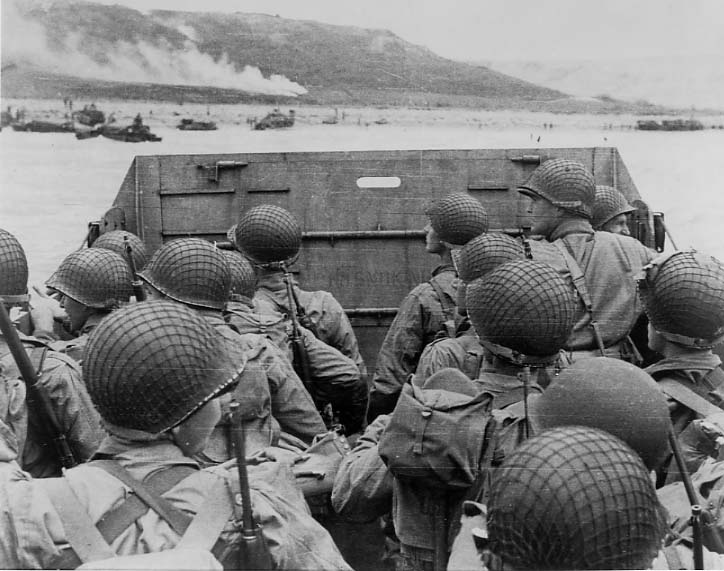On 6 June 1944, the Allies began Operation OVERLORD. Two years of planning preceded the operation that was designed to hasten the demise of Hitler’s regime and bring to a close a war that had lasted far too long. But the challenge of mounting an invasion was enormous: ferrying thousands of troops and tons of equipment and supplies across the notoriously unpredictable English Channel against heavily fortified German positions on the other side.
The Allied command assigned two of the five invasion beaches to American forces and code named the beaches Omaha and Utah. Engineer troops provided landing support for more than 50,000 men and well over 4,000 vehicles. Engineers composed 25 percent of the force the Allies landed. On the day of the invasion, the first waves of the landings were the most dangerous and nearly disastrous. In dense haze and strong currents, the troops landed as much as 2,000 yards to the left of their assigned Omaha beach sections, chosen because they provided exits leading through natural draws in the dunes and cliffs. The Germans took full advantage of the attackers’ exposed position and raked the beaches with devastating machine gun fire. All in all, the Germans damaged about 60 percent of the equipment and killed and wounded about 34 percent of the invading force. On Utah beach, the invasion force encountered fewer obstacles, particularly mines, and German resistance was not as fierce.

American assault troops in a landing craft huddle behind the protective front
of the craft as it nears a beachhead on the northern coast of France.
Smoke in the background is naval gunfire supporting the landing. 6 June 1944.
Specially trained engineer special assault gapping teams, support teams, and command teams blew holes in the Germans obstacle lines and cleared exits as soon as they came ashore. For this purpose, each team carried 1,000 pounds of explosives, demolition gear, mine detectors, and mine gap markers. Each member lugged 75 pounds of equipment, including 40 pounds of explosives. Engineer battalion beach groups followed the first wave and established the first dumps of ammunition, fuel, and supplies, cleared exits through the bluffs and other military and natural barriers behind the beach, and developed roads to allow American troops and equipment to get off the deadly beach and into the interior.
Despite desperate early hours on Omaha beach, the invasion was a success. Without the engineer effort in destroying obstacles, clearing minefields, building exit roads, and fighting in the line as infantrymen, the Germans might have repulsed the invasion. Instead, the Allies established a toehold in Nazi-occupied Europe on their way to victory.

LSTs (Landing Ship, Tank) empty their cargoes onto the Normandy beaches in the days after
the initial landings. Barrage balloons float overhead to protect the ships from enemy aircraft.
National Archives 26-G-2517.
The letter on the left is from General Dwight D. Eisenhower to the Allied Expeditionary Force on the eve of the invasion.
This copy is from the Paul Meek Personal Papers Collection at the Office of History, HQUSACE.
Meek was a first lieutenant in the 368th Engineer General Service Regiment. Click the memo for full sized image.
The handwritten memo (incorrectly dated) is from the Eisenhower Presidential Library. General Dwight D. Eisenhower drafted the memo in case the D-Day invasion failed.


***
June 2019; updated June 2024. No. 133.
Suggested further reading:
Barry W. Fowle, “The Normandy Landing,” in Barry W. Fowle, ed., Builders and Fighters: U.S. Army Engineers in World War II, (Fort Belvoir, Va.: Office of History, U.S. Army Corps of Engineers, 1992), pp. 433-450.
Alfred M. Beck, et. al., United States Army in World War II, The Technical Services, The Corps of Engineers: The War Against Germany, (Washington, D.C.: Center Of Military History, United States Army, 1985), Chapters XIV and XV.
Alfred M. Beck, History of the U.S. Army Corps of Engineers, The War Against Germany, 1941–1945, (Alexandria, Va.: Office of History, U.S. Army Corps of Engineers, forthcoming).